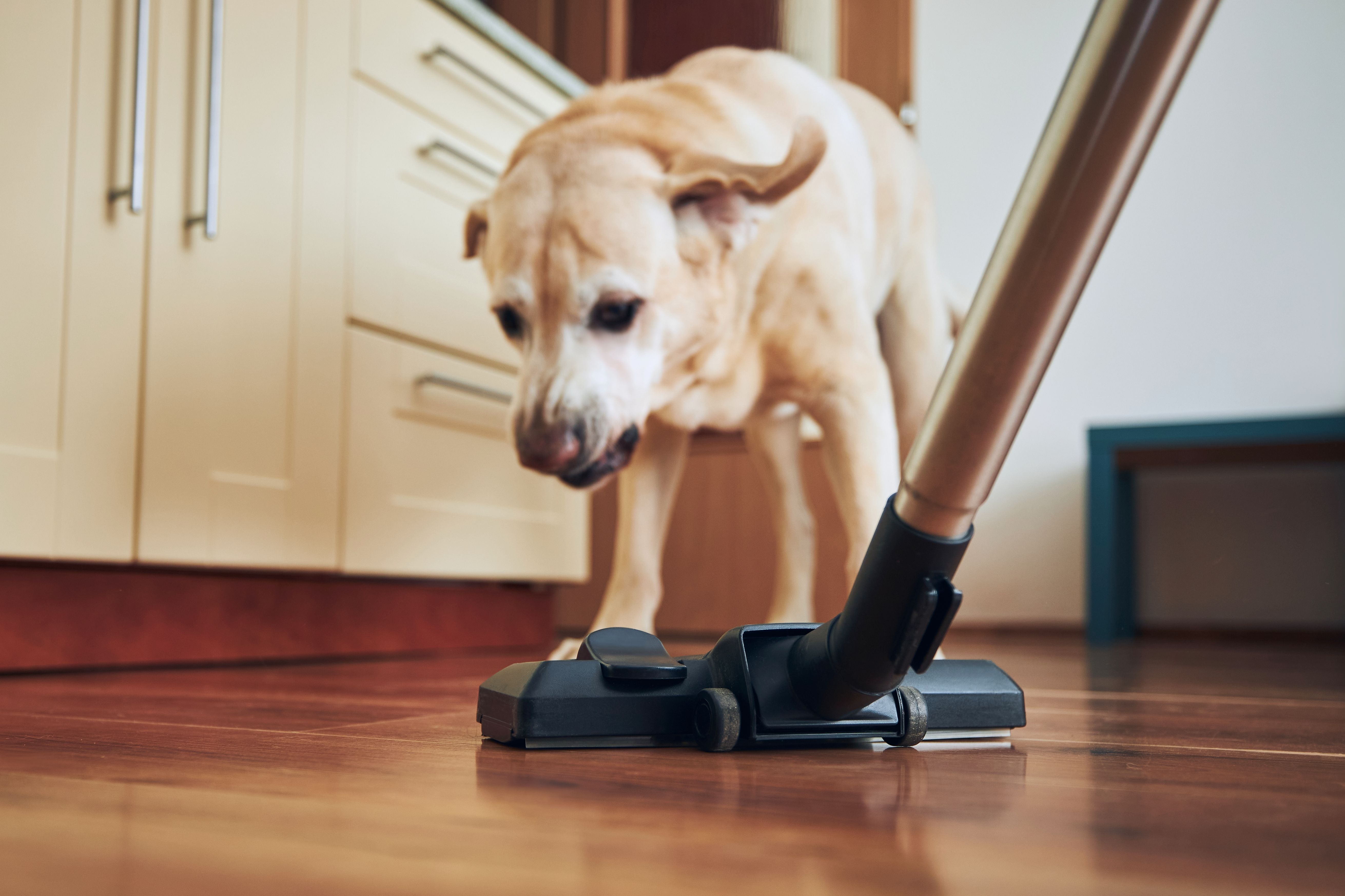How Can Renters Deal With Pet Liabilities?
24 Jan 2022
When renting with a pet, tenants must prepare for multiple pet liabilities and penalties that can upset their landlord or get them evicted. Luckily, Build To Rent offers an easier way to rent a pet-friendly home for tenants in the UK.
Pets can enrich your life, offer companionship and improve your mental health. Unfortunately, your landlord may not feel the same way. Many landlords add a no-pets clause in the tenancy agreement or include a provision specifying tenants have to make a formal request to bring a pet with them. As per the Consumer Rights Act 2015, landlords are not allowed to enforce blanket bans over pets1. However, the Act also states that if landlords can give a good reason, they can refuse pets. For instance, if the landlord’s insurance policy does not cover pet damage or another tenant has allergies, they can decline to rent their property to a pet owner. In some cases, landlords may also deny your request to bring a pet due to terms and conditions in the building’s lease agreement.
Most pet owners can win their landlord over by offering to paying a higher deposit, paying a rent premium or getting pet insurance. This article discusses pet penalties and whether you should get pet liability insurance for renters.
- What Penalties Can a Tenant Face Due to Pets?
- How Can You Protect Yourself Against Pet Liabilities For Renters?
- How Can the Build To Rent Model Address Your Concerns?
- Final Thoughts

What Penalties Can a Tenant Face Due to Pets?

If your landlord does not want a pet on their property, they can:
Send An Eviction Notice
If your pet causes extensive damage to the home, landlords can send you an eviction notice. This is possible due to the Housing Act 1988 where landlords can send a section 8 notice for tenants2. However, a judge can only rule against you if the landlord can provide tangible proof of the damage caused.
Decline Renewing Your Tenancy
If you have an assured shorthold tenancy and your landlord does not want to continue renting their property to a pet owner, then they can also refuse to continue the tenancy once it ends. They can then evict you using a section 21 notice3.
File for possession
If your landlord deems your pet unsuitable for their property and your tenancy agreement has a valid pet prohibition clause, then they can cite a breach of contract and file a court order for claiming possession of the rental home. This applies even if you have signed a long-term tenancy agreement4.
Ask You to Pay for Cleaning Costs and Pet Damage
Some landlords ask renters to pay for special cleaning costs once the tenancy period is over. They can also ask you to pay for pet damages such as injuries to the landlord or another tenant or property damage.

Can You Protect Yourself Against Pet Liabilities For Renters?
Finding a pet-friendly home is not easy. If you are looking for the best way to deal with pet liabilities for renters, then we suggest you consider the following:
Paying a Higher Deposit and Rent Premium
Paying a higher deposit or rent premium won’t protect you against pet liabilities. However, it can convince your landlord to let their property to you. Typically, landlords ask tenants to submit a security deposit equivalent to 4 weeks of rent but for pet owners, they can ask for 5 weeks5.
Landlords can also increase the rent for pet owners by £50 per month to pay for damages6.
Always Ask for Permission
A big reason for pet penalties is if you bring a pet home without asking your landlord’s permission first. Unless your tenancy agreement allows you to bring a pet on the property, you must run things by your landlord first.
Getting your landlord’s approval is important because even if you are legally allowed to keep pets, your landlord can find some excuse for evicting you. Having a pet without your landlord’s permission may also force them to examine the condition of the rental home more closely when your tenancy ends. If they find sufficient cause, they can withhold a portion of your tenancy deposit to pay for damages.
Getting Pet Liability Insurance for Renters

One of the primary ways to seek protection against pet penalties is to purchase pet liability insurance for renters. Getting a pet insurance policy can help cover a number of unexpected pet expenses and offers the following benefits:
- Protection against vet bills if your pet suffers from an accident or illness.
- Multi-pet discount – Various insurers offer a discount if you have more than one pet.
- Third-party liability (dogs only) – provides coverage for damage done to a person or property.
As far as your landlord is concerned, they will want to know if your pet insurance offers coverage for third-party liabilities. These occur if your dog injures someone or damages property. Third-party liability includes expenses, legal costs and claimant’s costs. Having pet liability insurance for renters will reassure your landlord about repairing any pet damage caused to the rental property. It can also offer insurance against claims made by neighbours if your pet injures them by accident.
Do read the terms and conditions of the pet insurance policy carefully before you sign it. This will help you prepare for scenarios when you cannot file a claim and need to make other arrangements.
How much can you expect to pay for pet insurance?
According to a survey comprising 1,300 respondents, the average cost for an annual lifetime pet insurance policy is £472 for a dog and £285 for a cat7. Insurance premiums can go as high as £2,000. 60% of policyholders also need to pay more in pet insurance when they renew their policies. In this case, the price hike stood at £123 for dogs and £57 for cats.
On average, a pet insurance claim is £7938, but if your pet contracts a chronic illness, then these claims can quickly increase and amount to thousands of pounds.

Some pet insurance policies can be customised to offer third-party cover only. These are less costly and can cost between £11.20, £15.68 and £22.40 annually. You can expect to be covered up to £3m if you purchase these policies9.
Being a Responsible Pet Owner
Having pet liability insurance for renters doesn’t provide you with foolproof protection. As a pet owner, you have to do your part and look after your furry friends with the love and consideration they deserve. Here are a few tips that can help you take care of your pets, minimise the chance of any penalties, and avoid upsetting your neighbours and landlord:
- Make sure your pet is microchipped. This will be immensely helpful if they get stolen or lost.
- Train your pet to obey you. This is particularly important for instructions such as “stay” and “sit”. These cues can especially come in handy during an emergency situation and may even help save your pet’s life.
- Make sure your pet gets exercise regularly. This helps them stay fit and avoid developing behavioural issues. If your pets feel cooped up, they may also create more noise disturbances that can upset your neighbours.
- Encourage your pet to socialise with new people and other pets.
- Pet-proof your house by installing child-proof latches on cabinets and keeping the trash can covered. Make sure to keep any wires out of your pet’s reach. You can also research foods and household products that pose a risk to your pet and make sure they don’t accidentally consume them.
- Regular visits to the groomer and vet are crucial. Emergencies can occur at any time, so make sure your pet is insured.
Click here if you need help finding a pet-friendly property.

How Can the Build To Rent Model Address Your Concerns?
As the Private Rented Sector makes it difficult to keep pets, a newer housing model, Build To Rent, has emerged that promotes pet-friendly apartments.
According to a survey by PRSim, 32% of tenants are happy to pay a rental premium for pets. In comparison, fewer tenants were willing to pay more for facilities such as high-speed internet, parking, cable TV and house cleaning services.
Unfortunately, even though over 40% of households in the UK own a pet, a government survey revealed that only 7% of landlords are willing to rent their property to pet owners.
In comparison, 74% of Build To Rent homes are pet-friendly10. Build To Rent properties have also revolutionised renting with the inclusion of several amenities and facilities that can allow renters to:
- Book online services that offer dog walking sessions
- Join dog walking clubs
- Access specialist pet services, such as dog walking and grooming
Since Build To Rent apartments are pet-friendly, pets are less likely to damage woodwork, wiring and flooring, thereby saving maintenance costs. It can also lower your premiums for pet insurance.

Final Thoughts
It is not easy to avoid pet liabilities for renters while living in a traditional rental property. Not only will you feel discouraged due to landlords’ behaviour, but the lack of pet-friendly homes can pose another challenge. You can always purchase pet liability insurance for renters, but if you want to avoid these hassles in the long term, we recommend renting a Build To Rent home.
Visit www.buildtorent.io and explore numerous pet-friendly properties that can serve as the ideal home for you and your furry friends.
- UK government, Consumer Rights Act 2015↩
- UK government, Housing Act 1988↩
- UK government, Evicting tenants (England and Wales)↩
- Landlord Law Blog, Tenant penalties for breaching tenancy rules – pets↩
- CIA Landlords, Pet Damage in Rented Property↩
- The Guardian, Landlords charge 'pet rent' to recoup losses after ban on unfair fees↩
- Which?, Revealed: the rising costs of pet insurance↩
- ABI, Pet insurance showing its value as vet bills rise↩
- Bought By Many, Low-cost liability cover for dogs↩
- BTR News, Key data revealed from 2020 National Build to Rent report↩
